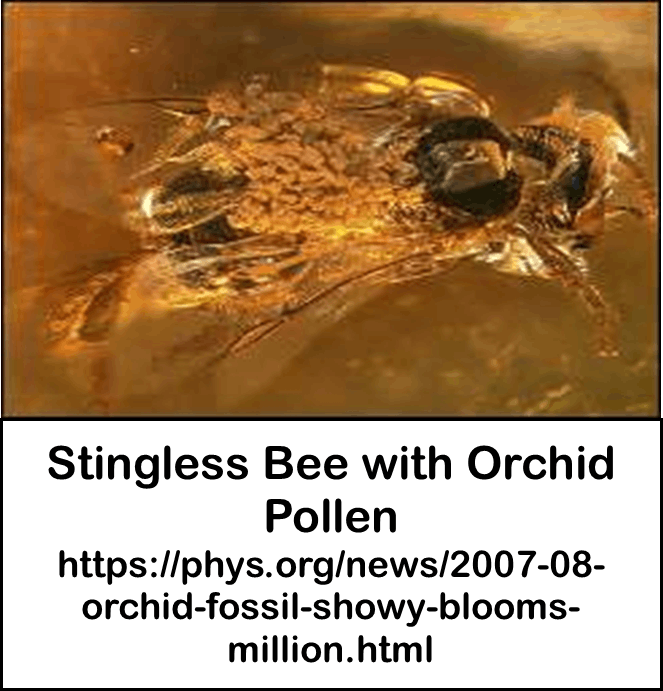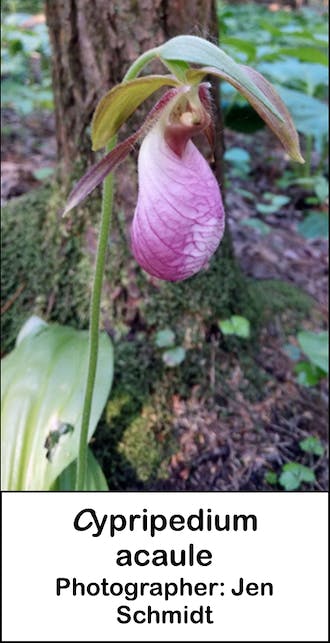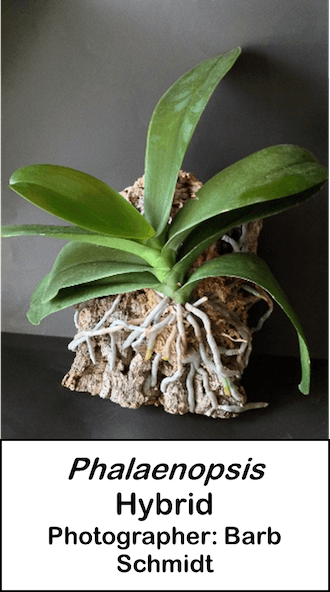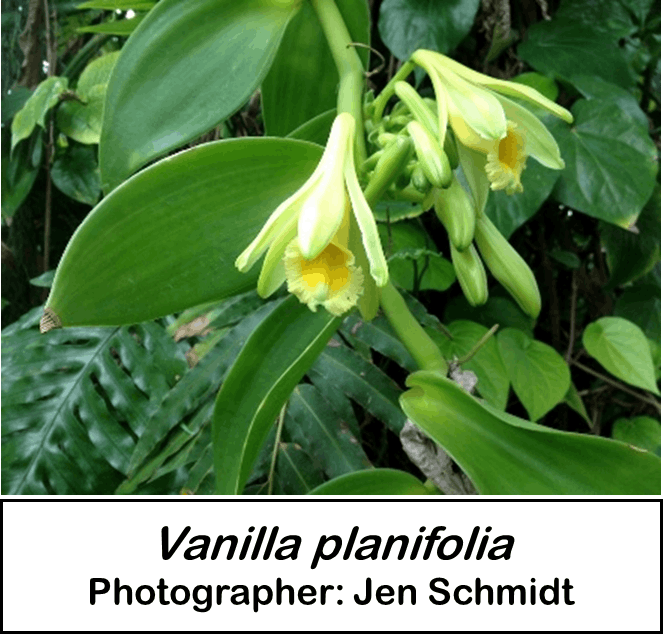


Discussion

Orchidaceae was one of the first families of flowering plants to appear on Earth. Dating plant material is difficult because it doesn’t fossilize. Due to a serendipitous event, scientists now believe that orchids evolved around 112 – 120 million years ago (MYA). In the mid-1980’s, Harvard biologists were studying a stingless bee frozen in time in a piece of amber. The amber dated to 35 MYA. When they removed the stingless bee, it had orchid pollinia on its back. That event told them two things. First, the stingless bee was a pollinator of orchids; and second, Orchidaceae was much older than anyone had thought. This led to the search for older pieces of amber with stingless bees. Add to that the use of a dating tool called the Molecular Clock (see Resource 1), and it was discovered that orchids have been around since the Late Cretaceous Period. So, orchids were here with the dinosaurs.

About 66 MYA, a mass extinction occurred that eliminated approximately 75% of life on Earth. Orchids survived this mass extinction and benefitted from it. They were able to expand into the many ecosystems and niches that were left empty. This is one of the reasons why there are approximately 880 different genera of orchids and almost 30,000 species. Today, there are native orchids on every continent, except Antarctica, and in every climate, except those that are permanently frozen or permanently dry. Cypripedium acaule is native to the eastern third of the United States and thrives in areas where the soil pH is 4.5. The one pictured below was found in a pine forest in Ithaca, New York. The tannins produced by the pine trees keep the soil pH low.

Another event occurred around 35 MYA and added to Orchidaceae’s diversity when some orchids moved from growing in the ground to growing in the air. This was the beginning of epiphytic orchids which grow on trees and lithophytic orchids which grow on rocks. These orchids also found very little competition in their new niches and were able to rapidly expand into the ecosystems. Many of the orchids raised in pots would hang from a tree or rock in nature.
People often believe that orchids are delicate, fragile, and difficult to grow; the truth is that orchids are survivors that have had a very, very long time to evolve. This is one of the reasons that they are so different from other perennial plants.
Fun Fact

The genus Vanilla appeared approximately 80 MYA. This extant, still in existence, orchid genus is responsible for vanilla extract. Vanilla orchids are native to Mesoamerica and are pollinated by stingless bees. There are massive Vanilla plantations in places like Madagascar, Sri Lanka, and India, but no pollinators. Since the flower produced by the Vanilla plant only stays open for 1 day, workers must be in the fields 365 days a year to hand-pollinate these flowers. Once pollinated, the plant produces seed capsules that resemble a long, thin green bean. When these seed capsules are processed, vanilla beans are produced that are sold as is or go through further processing to produce vanilla extract. This labor-intensive process is why vanilla extract is second only to saffron in cost per ounce.
Website Tip
The AOS website is a wealth of information for orchid enthusiasts. Since 1932, the AOS has been publishing a world-renowned magazine. Orchids magazine (formerly known as the AOS Bulletin) is among the many benefits of AOS membership. Exploding with glorious full-page color photographs, each monthly issue is packed with topics of current interest for both beginners and advanced orchid growers. Online copies of this magazine, and its supplements, are available back to its inception.
There are two ways to reach the magazine archives online. First, make sure you are signed into your AOS account:
1. The easiest way is to click on your name/icon in the upper right corner of the home page.
Scroll down and click on “ORCHIDS Magazine (view/download).
2. Another way to click on the “All About Orchids” tab and then scroll to “Orchids Magazine”.
The latest issue of the magazine is always shown here for you to digitally browse through, as well as some coming articles in the next issue. In “Article & Photo Search” you can search for articles or photos using a keyword, author’s name, or date range. Scroll further down the page and you’ll come to “Back Issues”. This is where you can pick any year from 1932 to see the magazine issues that were published in that year. Look for the “Select a year:” on the right opposite the title “Latest Issues”.
Happy reading!
Resources
1. “Origin and Diversification of Orchids,” Jen Schmidt, Vol 90, No. 5, May 2021,
https://secure.aos.org/digital-library/202105orch_90-05/50/index.html
2. “Orchids for Everyone: Introduction to Orchids – Module 1 of the Master Gardener Series,” Barb
Schmidt, July 27, 2024 webinar
Orchids for Everyone: Introduction to Orchids – Module 1 of the Master Gardener Series - American Orchid Society

FREE ACCESS: Orchid DealWire
Get notified when orchid vendors have special promotions and exclusive savings.






